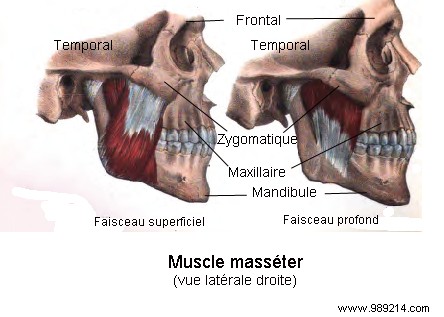A team of scientists announces that they have isolated a body part that has never been described before. This is a deep muscle layer found in the masseter, the levator muscle of the lower jaw, essential for chewing.
The masseter muscle is the most important masticatory muscle . Its main function is to raise the mandible against the maxilla and to exert masticatory force. It also plays a small role in the elongation of the mandible and in lateral movements and participates, incidentally, in the aesthetics of the face.
Modern anatomy textbooks describe this masseter muscle with two layers:deep and superficial. Nevertheless, several historical texts also mention the possible existence of a third layer. These writings, on the other hand, are very incoherent as to his position.
As part of a recent study, a team from the University of Basel, Switzerland, carried out an anatomical study to clarify the presence and morphological characteristics of this famous distinct third layer of the masseter muscle.
For this work, the results of which are published in the journal Annals of Anatomy, the authors dissected a dozen human heads preserved in formaldehyde. They also performed CT scans of sixteen cadavers and reviewed an MRI of a living subject.

At the end of their analyses, the authors of this work emphasize having effectively isolated a anatomically distinct deep third layer of the masseter muscle. According to the study, this is profiled from the medial surface of the zygomatic process of the temporal bone to the root and posterior border of the coronoid process (a triangular projection on the lower jaw).
“This deep section of the masseter muscle is clearly distinguishable from the other two layers in terms of course and function “, Details Szilvia Mezey, lead author of the study. "Based on the arrangement of the muscle fibers, the muscle layer likely helps stabilize the lower jaw by 'elevating and retracting' the coronoid process ". This muscle layer is the only part of the masseter capable of pulling the jaw backwards.
“While it is generally accepted that anatomical research over the past hundred years has left nothing unturned, our discovery bears some resemblance to the discovery of a new species of vertebrate by zoologists “, emphasizes Jens Christoph Türp, co-author of this work.

To facilitate discussion on this part of the newly described masseter, the authors propose to name it M. masseter pars coronoidea (coronoid part of the masseter). His discovery could help doctors better perform surgeries in this region of the jaw and better treat conditions involving the joint that connects the jaw to the skull.